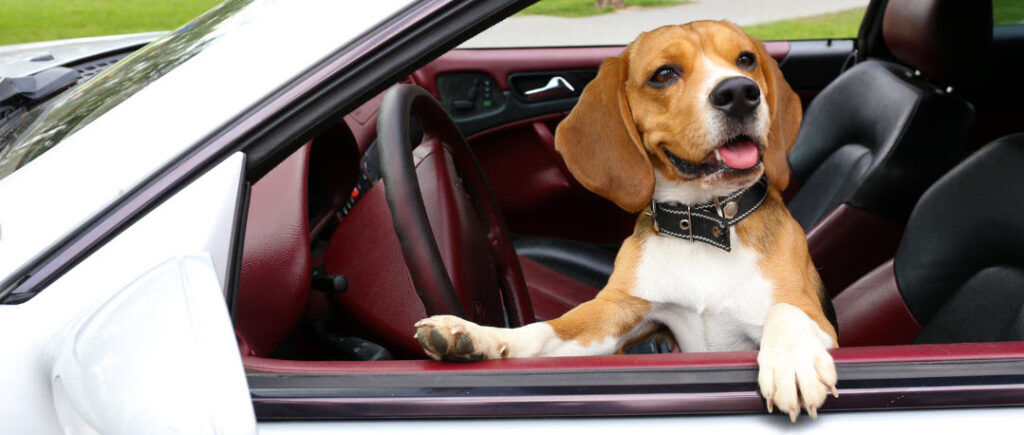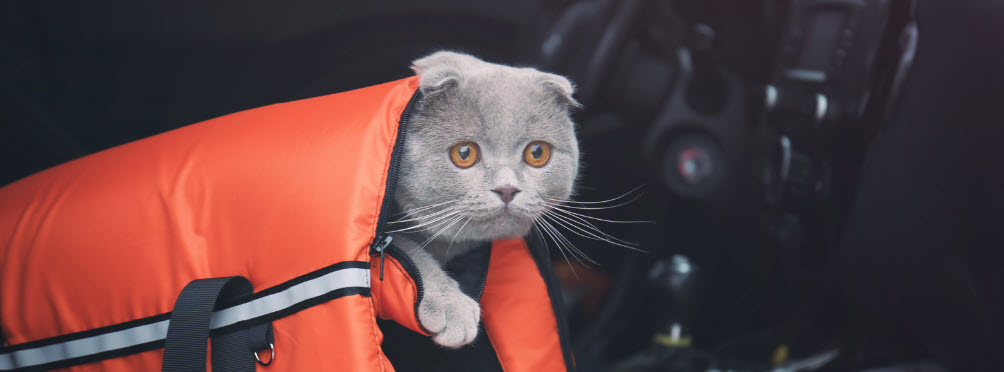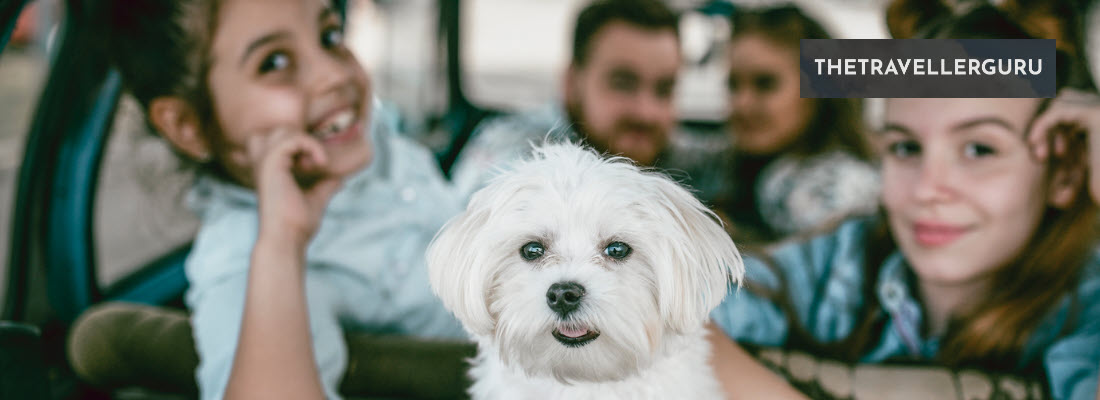Hey travelers and welcome to my post where we will check out my 8 tips for traveling with pets in a car this year. For many pet owners, a trip is only complete with the four-legged family members coming along. However, traveling can be a very stressful experience for both you and your pets.
So if you’re planning a trip with pets, I have come up with some tips to make sure everyone travels safely and comfortably.
- Know your pets’ travel behaviours
- Plan and pack your pet supplies beforehand
- Keep your pets secured inside the vehicle
- Bring the correct paperwork
- Skip a meal on travel days
- Keep your pets hydrated
- Never leave your pets in the car alone
- Select pet-friendly accommodations
Tips for traveling with pets In a Car
So with that in mind, let’s check out my 8 tips for traveling with pets below:
1. Know your pets’ travel behaviours
As it is with traveling with children, some pets seem to enjoy the rigors of travel whilst others do not. Of course you may not always have the choice on how you travel but if you are going by car, then I suggest you acclimatize your pet by taking them on a few shorter trips to ensure they are at ease before the long trip.
This allows you to learn your pet’s travel behaviors such as whether they get car sick (yep, we had a dog who used to faint in the car), need extra stops or even where they like to be within the vehicle. Your veterinarian may recommend medication to treat car sickness if you discover that your pet does experience it.
If you are planning to fly with your pet as part of the trip, then take them on trips in their travel cage etc. so they are used to that before you hit the busy airport as well.
2. Plan and pack your pet supplies beforehand
Again, as with kids, pets like comfort and familiarity when traveling. So first off, if they have a favorite chew toy etc., then make sure it is packed. Additionally, I suggest you include the following items in your travel preparations:
- Pet food
- Ample freshwater supply
- Pet leash
- Comfy bed linens
- Prescription drugs
- Updated information on pet identification tags
Find stores along your route that carry your pet’s food if your trip will last longer than his food supply. Traveling can be stressful, resulting in various symptoms, such as stomach upset and loss of appetite so the last thing you want is to switch your pet’s food while traveling great distances abruptly.
Check out these: Dog Travel Bags

3. Keep your pets secured inside the vehicle
One of the biggest risks to you and your pets when traveling is letting your pets run loose while you are driving. Not only can this result in injuries to your pets and any human passengers, but it also increases the likelihood that a pet will flee in panic in the event of an accident.
Place your cats inside carriers or pet crates as you travel. For dogs, specialized car seat covers, crates, harnesses, or booster seats designed specifically for seatbelt attachment are advised.
Check out these: Travel Pet Carriers
4. Bring the correct paperwork
If you are traveling domestically via vehicle, then this may not be a big of an issue, however if you are going to another country then this can be a critical factor. For example, many locations demand that incoming pets are microchipped have a current health certificate verified by a licensed veterinarian.
Typically, veterinarians will certify that your pet is healthy and current on all vaccinations required by the receiving state or country before signing any paperwork.
And in case you have missed the couple of mentions in this post above, make sure your pet is microchipped – this way if it does jump out of the car or escape from a hotel room etc., the it can be found and returned a lot faster than if not.

5. Skip a meal on travel days
No matter how understanding you are with your pet, they will inevitably experience some anxiety. We had a dog that suffered from stress diarrhea when we traveled with it. Which trust me, is the last thing you want to deal with on a long car or plane ride.
Even if your pet didn’t seem anxious before the trip, simple motion sickness could quickly upset their stomach. To prevent further problems brought by stress diarrhea, many veterinarians advise feeding your pets less than you typically would before traveling.
Don’t starve them – especially if they are showing signs of hunger. Just skip the last meal you would normally give them before leaving on your trip.
6. Keep your pets hydrated
The last tip however does not include water. Pets can quickly become dehydrated when traveling if they have limited access to water as they need it. When traveling, bear this in mind and give your four-legged companion extra water.
If possible, attach a bowl to the inside of the animal’s crate to encourage self-regulation of water intake – leak proof options are available here of course. If that is not possible however, make frequent stops to allow the animal to drink.
And if they are stress free, giving them wet food rather than dry is another way to keep them comfortable. Wet food’s high water content can help pets stay hydrated while you’re on the road.

7. Never leave your pets in the car alone
This next tip is not restricted to just travel and although most pet parents probably already know this, I would like to stress that it is the most crucial thing to keep in mind when traveling with a pet, especially during the summer.
Experts claim that it takes six minutes for a pet to essentially move into a fatal situation when trapped in a closed space. It doesn’t matter if you just briefly step out of your car. Dogs should never be left inside a vehicle alone on a hot day.
8. Select pet-friendly accommodations
When choosing accommodations for your trip, remember that just because you love your pet doesn’t mean the owner of the hotel or Airbnb where you’re staying will feel the same way. It will be advantageous to search for hotels that provide benefits for pet owners, such as animal daycare.
However, you should still call ahead and ask about their pet policy to ensure there are no surprises when you get there. Note also that some places will charge a larger deposit or bond should you plan to bring a pet with you.
Conclusion
And there they are, my traveling tips for you and your animal companions. I would be pleased to know how this article helped you, and as usual, let me know of your experiences here.
Also, please do not hesitate to comment below if you have any questions, concerns, corrections or would like me to check anything else out for you.
Until next time.
Have fun
Paul






